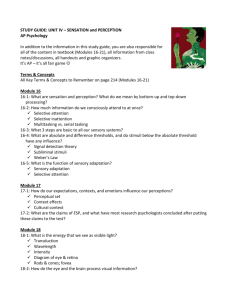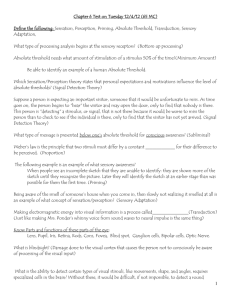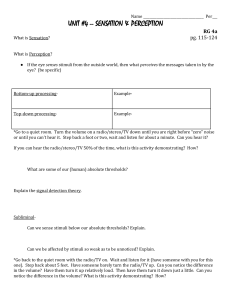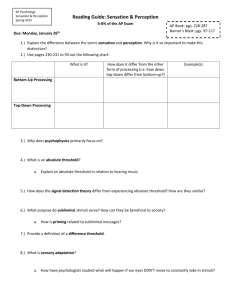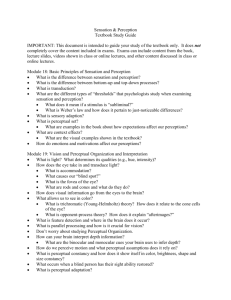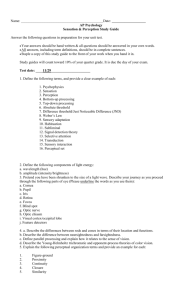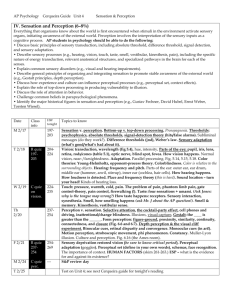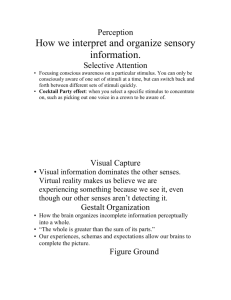Intro to Sensation and Perception Bottom-up processing Top
advertisement
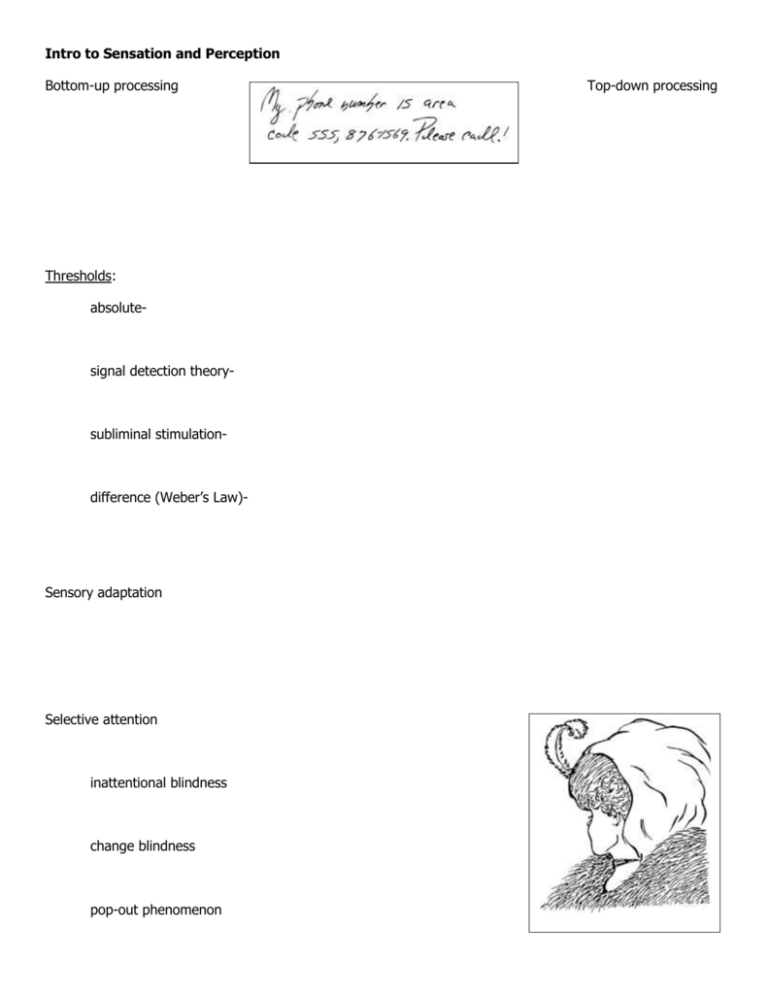
Intro to Sensation and Perception Bottom-up processing Thresholds: absolute- signal detection theory- subliminal stimulation- difference (Weber’s Law)- Sensory adaptation Selective attention inattentional blindness change blindness pop-out phenomenon Top-down processing Vision What is transduction? Why is it necessary? wavelength=hue amplitude=brightness The eye Pupil Iris Lens Retina -rods and cones -optic nerve -blindspot -fovea Feature detectors Visual Information Processing Parallel processing Color Vision Young-Helmholtz trichromatic theory Opponent-process theory Color constancy Hearing Stimulus-sound waves Parts of the Ear Outer ear (funnel for sound) auditory canal Middle ear eardrum hammer, anvil, stirrup Inner ear cochlea oval window basilar membrane hair cells auditory nerve Perception of pitch Hearing loss and deaf culture place theory (Helmholtz)- conduction hearing loss frequency theory- sensorineural hearing loss Sound location Cochlear implants Sensory compensation The “Other” Senses Touch Pain: Gate-control theory Biological influence Psychological influence Social-cultural influence Influence of memories Taste taste receptors sensory interaction (rare form of interaction-synaesthesia) Smell (olfaction) Brain region (red) for smell is closely connected with brain regions (limbic system) involved with memory, that is why strong memories are made through the sense of smell. Body position and movement Kinesthesis (the system for sensing the body parts’ position and movement) Vestibular sense (the sense of body movement and position, includes balance) Perceptual Organization Organization Principles gestalt Form perception figure-ground grouping Depth perception visual cliff binocular cues: retinal disparity convergence monocular cues: relative size interposition relative height relative motion relative clarity linear perspective texture gradient light and shadow Motion perception phi phenomenon Perceptual constancy shape and size constancies size-distance An Ames room is designed to give size-distance illusion. Lightness constancy The color and brightness of square A and B are the same. Perceptual Interpretation Sensory deprivation and restored vision The role of experience and “critical periods” Perceptual adaptation (goggles) Perceptual Set—what do you see? Role of schemas Concept effects Perception and the human factor human factor psychologists natural mapping Extra sensory perception telepathy clairvoyance precognition psycho kinesis

